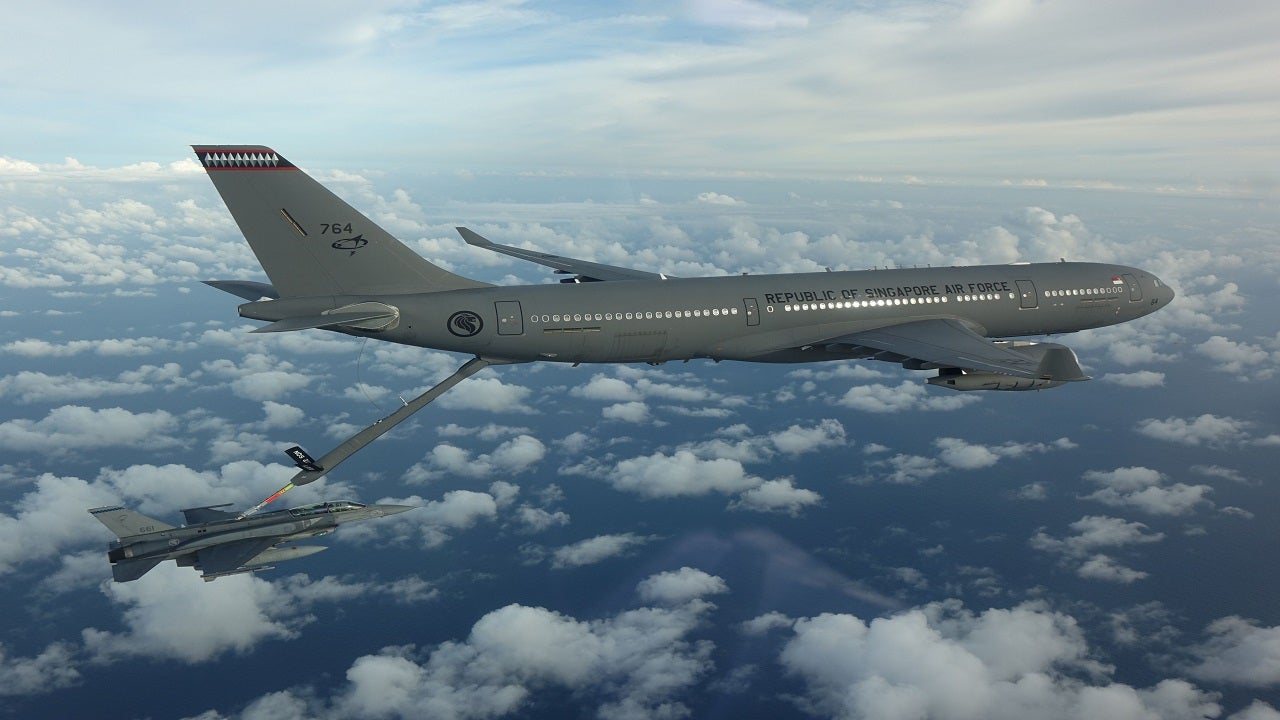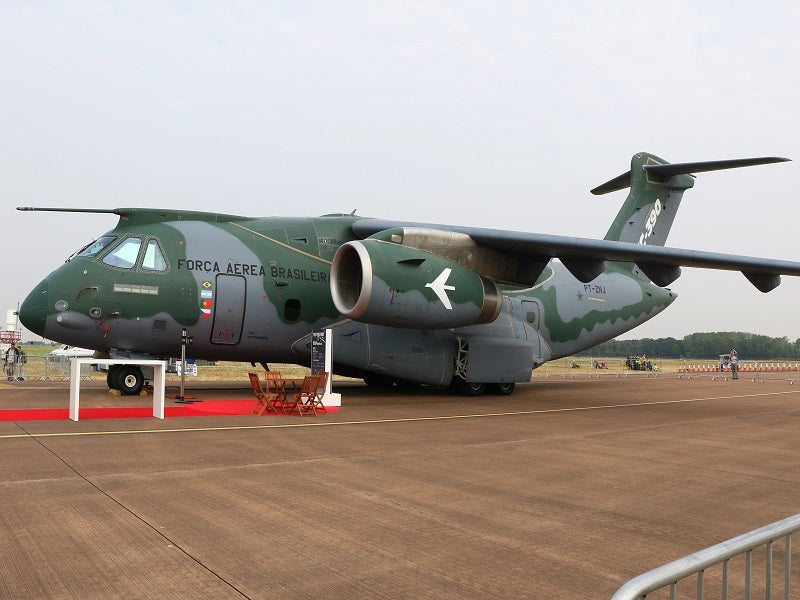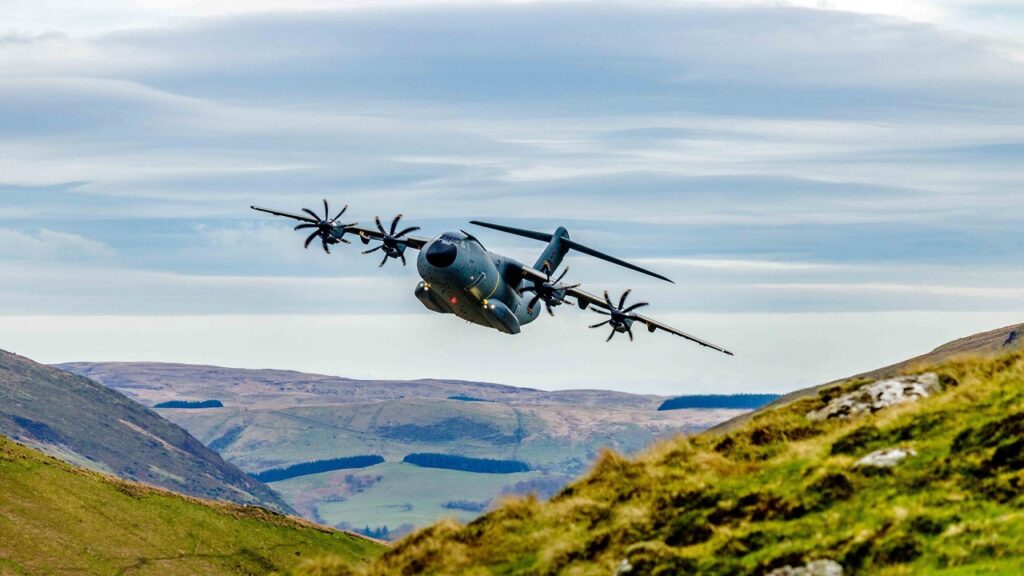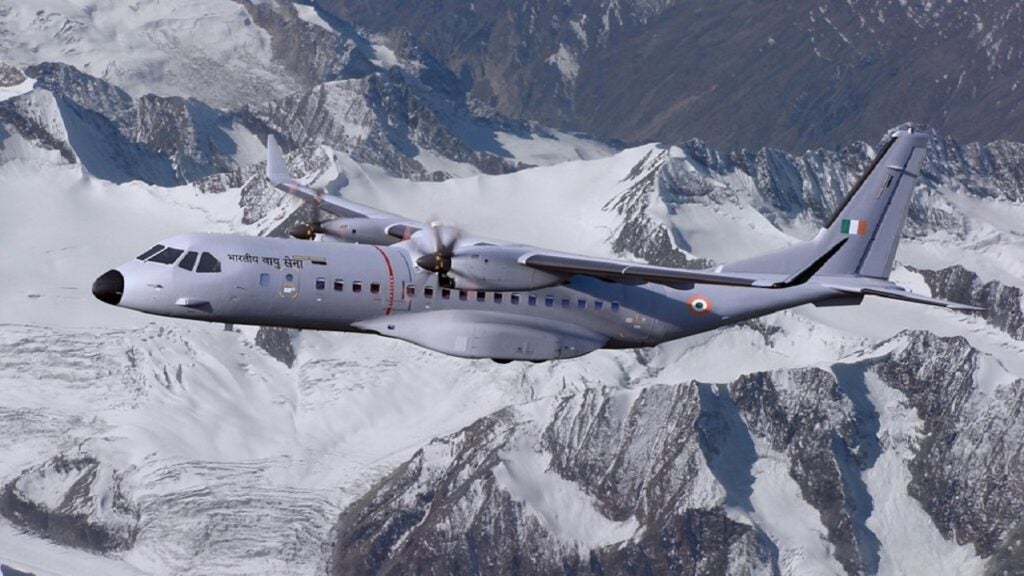
The A330-200 MRTT is a new generation, combat-proven multi-role tanker transport (MRTT) aircraft manufactured by multinational aerospace and defence company Airbus.
In January 2004, the UK Ministry of Defence (MoD) announced the selection of the AirTanker consortium to provide air-to-air refuelling services for the British Army, Navy and Air Force, under the future strategic tanker aircraft (FSTA) programme. The AirTanker consortium comprises Airbus, Rolls-Royce, Babcock, and Thales.
The new tanker transporters, known as Voyager in the RAF service, replaced the RAF’s fleet of 26 VC-10 and Tristar tanker aircraft.
The MoD air-to-air refuelling programme will cover a 27-year service period and represents the world’s largest defence private financing initiative arrangement. The contract includes options to extend the service for a further period.
In addition to the UK, the aircraft is operated by several other countries. Airbus received orders for 61 aircraft and delivered 48 aircraft, to date.
Future strategic tanker aircraft (FSTA) programme
AirTanker was confirmed as the preferred bidder for the FSTA project in February 2005.
In June 2007, the UK MoD approved the private finance initiative (PFI) for the procurement of 14 A330-200 tankers.
Under the PFI, AirTanker owns and supports the aircraft, while the RAF flies the aircraft and has total operational control.
The UK MoD placed a 27-year contract for the 14 aircraft in March 2008. The maiden flight of the RAF’s first A330-200 took place in September 2010. The second aircraft took off on its first flight in October 2010. The first A330-200 MRTT entered service in June 2011. The delivery of the final aircraft under the programme was completed in July 2016.
VT Group, the support services integrator, is based at RAF Brize Norton. The RAF aircrew operate the aircraft for military services. When not in military service, the aircraft can be leased for commercial use and operated by civilian aircrew.
The fleet is managed in three groups. The majority is in full-time military service with the RAF.
Airbus A330-200 MRTT international orders
In April 2004, Australia also selected the A330-200 MRTT for the AIR 5402 requirement for five aircraft. The MRTT, designated the KC-30B, replaces Australia’s Boeing 707 tanker transporters. In June 2006, Airbus delivered the first A330 platform to EADS CASA in Madrid for conversion.
The first flight of the KC-30B for Australia took place in June 2007. Delivery of the first two A330-200 MRTT aircraft to the Royal Australian Air Force (RAAF) occurred in June 2011.
The fifth and final aircraft was handed over to RAAF Base Amberley in December 2012. The RAAF A330-200 MRTT achieved initial operational capability (IOC) in February 2013.
The UAE selected the A330 MRTT in February 2007 and announced the procurement of three A330-200 MRTT aircraft in 2008. The first aircraft accomplished its maiden flight in April 2011 and was delivered to the UAE Air Force in February 2013.
UAE received the second and third A330 MRTT aircraft from Airbus Military in May 2013 and August 2013, respectively.
In January 2008, Saudi Arabia placed an order for three A330 MRTT aircraft, which are equipped with the EADS air refuelling boom system (ARBS) and hose and drogue refuelling pods. Three more A330 MRTT aircraft were ordered by the Saudi Ministry of Defence and Aviation in July 2009, bringing the total number of orders to six.
The first A330-200 MRTT of the Royal Saudi Air Force (RSAF) completed its maiden flight in March 2011 and the first batch of three aircraft was delivered by early 2013.
The A330 MRTT aircraft formally entered service with the RSAF in February 2013. Delivery of the first two aircraft of the second batch took place in 2014, while the sixth and final A330 MRTT aircraft were delivered in June 2015.
In February 2008, the KC-30 (since re-designated the KC-45), a tanker based on the A330, was preferred for the US Air Force KC-X next-generation tanker requirement to replace the KC-135. Northrop Grumman led the KC-30 team, with EADS as a major subcontractor. In September 2008, the US Department of Defense upheld an appeal by competitor Boeing and cancelled the competition.
In January 2013, Airbus Military was selected as a preferred bidder by the Indian government to supply six A330 MRTT aircraft for the Indian Air Force.
The French Defence Procurement Agency (DGA) placed a firm order for eight A330 MRTTs in December 2015 and a further three in December 2018. Designated as ‘Phénix’, the first aircraft was formally handed over in October 2018, while the delivery of the rest of the fleet will be completed by 2023.
In March 2018, Airbus received a revised contract for the delivery of eight A330 MRTTs, under the NATO Multi-national Multi-Role Tanker Transport Fleet (MMF) programme, with options for additional aircraft. The first, second, and third aircraft were delivered in June, August, and November 2020, respectively.
The fourth A330 MRTT under the programme was delivered in April 2021, followed by the fifth in August 2021. The full fleet of nine MRTT aircraft will serve air-to-air refuelling, strategic transport, and medical evacuation needs of six participating countries, namely Belgium, Germany, Czech Republic, The Netherlands, Luxembourg, and Norway.
The Republic of Singapore Air Force received its first A330 MRTT aircraft in September 2018.
In January 2019, the Republic of Korea Air Force received its first A330 MRTT, bringing the total in-service fleet count to 35.
Manufacture / conversion of A330-200 future strategic tanker aircraft
The standard A330-200 commercial aircraft manufacturing takes place at the Airbus manufacturing centre at Toulouse, while the conversion of the aircraft is performed at the company’s facility in Getafe, Spain, where it is fitted with refuelling systems and military avionics.
The aircraft can be fitted with two Cobham FRL 900E Mark 32B refuelling pods, one under each wing. The A330-200 wing shares the same design structure, including the strengthened mounting points, as that of the four-engine A340 aircraft. The wing positions for mounting the air-to-air refuelling pods, therefore, require minimal modification.
The aircraft’s fuel system includes the installation of additional pipework and controls.
The baseline commercial aircraft uses a configuration of very high-capacity fuel tanks in the wings, so modifications to the fuel tanks for the tanker transporter role are not required.
Other than the refuelling systems, the main areas of modification are the installation of plug-in and removable military avionics, military communications, and a defensive aids suite. The military systems will be removed when the aircraft is in commercial non-military use. The passenger cabin and the cargo compartment are unchanged.
The lower deck cargo compartment can hold six 88inx108in Nato standard pallets, plus two LD3 containers. The civil cargo load could be 28 LD3 containers or eight 96inx125in pallets plus two LD3 containers.
Mission capabilities of the A330-200 MRTT aircraft
The A330-200 MRTT has a sufficiently high cruise speed and sizeable internal fuel capacity to fly 4,000km, refuel six fighter aircraft en-route, and carry 43t of non-fuel cargo. Similarly, the
aircraft could give away 68t of fuel during two hours on station at a range of 1,000nm. The aircraft has a maximum fuel capacity of 139,090l, or 111t.
The high fuel capacity enables the aircraft to fly at longer ranges, to stay on station longer and refuel more aircraft, which increases the basing options and reduces forces reliance on host nation support. For the UK requirement, the aircraft is fitted with a hose and drogue system. However, it has a refuelling boom system for the Australian order.
The two-hour flight test included various approaches to the refuelling positions and exploring displacements vertically and laterally from the normal refuelling position. The trial was carried out between 15,000ft and 20,000ft and at 280kt, which is the middle of the Tornado’s refuelling envelope. Within this test envelope, there was minimum turbulence in the airflow astern the A330-200 and the Tornado’s handling qualities were very satisfactory in all tested positions.
In July 2018, Airbus performed the first ever automatic air-to-air refuelling of the A310 tanker with seven RAAF KC-30A MRTT. The company plans to perform the same operation with the A330 MRTT. In December 2018, Lockheed Martin and Airbus entered a co-operation agreement to develop the air refuelling capabilities of A330 MRTT.
The passenger cabin and the cargo compartment are unchanged. Even with a full fuel load, the aircraft can carry 45t of cargo and up to 300 passengers.
The aircraft can be used to perform aeromedical evacuation operations. The aeromedical evacuation configuration is equipped with two intensive care units (ICUs), 16 stretchers, 96 economy-class seats, 21 seats for medical staff, and cargo capacity in the lower deck.
The aerial refuelling boom system (ARBS) can be used to refuel receptacle-equipped aircraft such as F-35A Lightning II and F-16 Fighting Falcon. It has a maximum fuel flow rate of 4,542.49l /min (3,600kg/min).
The underwing pods on the aircraft have simultaneous hose and drogue refuelling capabilities with a refuel rate of 1,589.87l /min (1,300kg/min). The aircraft can be used to refuel probe-equipped aircraft such as A400M or C295 with the help of the Cobham 805E fuselage refuelling unit (FRU). The FRU provides the flexibility to perform simultaneous refuelling for two aircraft.
Further, the MRTT aircraft can be deployed as a support aircraft to meet the needs of four fighter aircraft.
AirTanker demonstrated the capabilities of the aircraft to act as an airborne communications node, while also performing its air-to-air refuelling tasks in March 2021. The new capabilities were made possible through the upgrade of the satellite communications system on the Voyager.
A330-200 flight deck
The flight deck of the A330 is similar to that of the A340. The tanker transporter aircraft’s cockpit has a refuelling officer’s station behind the pilot and co-pilot seats.
An electronic flight information system provides six large interchangeable displays with duplicated primary flight and navigation displays (PFD and ND) and electronic centralised aircraft monitors (ECAM). The pilot and co-pilot positions have sidestick controllers and rudder pedals.
The aircraft is equipped with an Airbus future navigation system (FANS-A), including a Honeywell flight management system and Smiths digital control and display system. The fly-by-wire computer suite includes three flight control primary computers and two flight control secondary computers, all operating continuously.
The UK tankers are fitted with the Northrop Grumman large aircraft infrared countermeasures system (LAIRCM).
Engines and performance of A330-200 FSTA
Two Rolls-Royce Trent 772B jet engines, each providing 71,100lb of thrust, power the Voyager aircraft. The aircraft for Australia use the GE CF6-80E1 engines, rated at 72,000lb thrust. The auxiliary power unit is a Hamilton Sundstrand GTCP 331-350C.
The main four-wheel bogie landing gear, the fuselage centre line twin-wheel auxiliary gear and the twin wheel nose units fitted with Goodyear tyres. The runway length for maximum take-off weight is 2,650m, and the ground turning radius is 43.6m.
Contractors involved
Cobham is a prime sub-contractor for AirTanker’s contract. It provides the air refuelling equipment, including the 905E wing pods and a fuselage refuelling unit. Cobham also supplies antennae, cockpit control systems, oxygen and fuel system units, and composite components for all Airbus A330 aircraft.
QinetiQ was contracted for aircraft certification. The QinetiQ AirTanker support team carried out an air refuelling trial of the A330-200 aircraft in October 2003.



